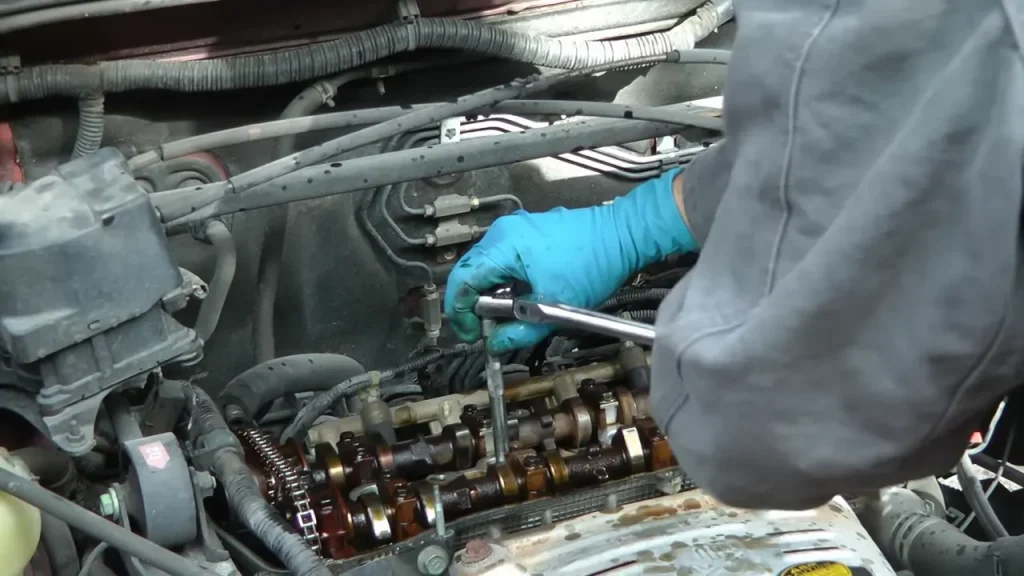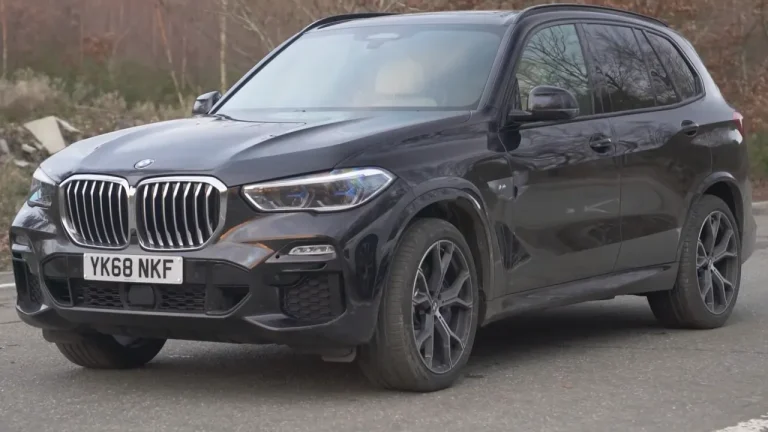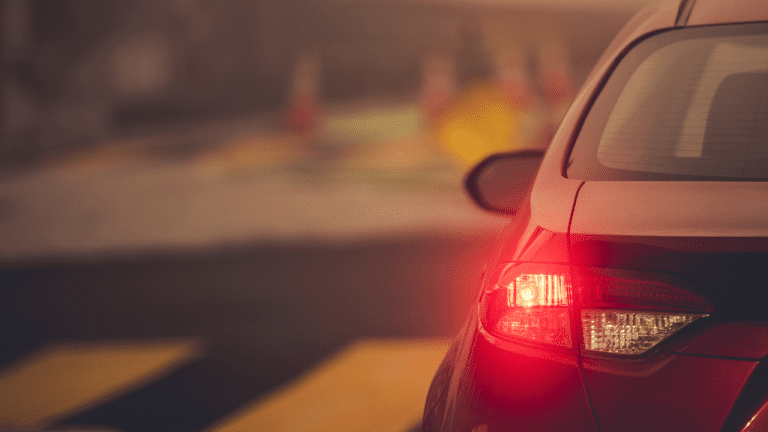Sealing Motor Oil Leaks From the Outside [A Practical Guide]
Motor oil leaks can be a source of frustration for vehicle owners, leaving unsightly stains in the driveway and potentially leading to engine damage if left unaddressed. While professional repairs are often the recommended course of action, there are instances where sealing motor oil leaks from the outside can provide a temporary solution or buy you some time until a proper repair can be conducted.
In this article, we will explore practical techniques and products that can help you seal motor oil leaks externally. It is important to note that these methods are not intended to be permanent fixes but rather temporary measures to mitigate leaks and minimize the risk of further damage.
We will discuss common causes of motor oil leaks, identify areas prone to leakage, and provide step-by-step instructions on how to seal the leaks effectively. Additionally, we will highlight various products, such as sealants and additives, that can assist in the sealing process.
By equipping yourself with the knowledge and techniques outlined in this article, you can take proactive steps to address motor oil leaks and maintain the integrity of your vehicle’s engine.
Use a Sealant Product
One effective method for sealing motor oil leaks from the outside is to use a sealant product specifically designed for this purpose. These sealants are formulated to bond with the surfaces of the engine components and create a temporary seal to prevent oil from leaking out. Here’s how you can use a sealant product to seal motor oil leaks:
1. Prepare the engine: Ensure the engine is clean and free from dirt and oil residue. Use a degreaser or engine cleaner to thoroughly clean the affected area around the leak.
2. Locate the leak: Identify the source of the oil leak. Common areas prone to leaks include the valve cover gasket, oil pan gasket, timing cover, or camshaft seals.
3. Read the product instructions: Carefully read and follow the instructions provided with the sealant product. Different sealants may have specific application methods and curing times.
4. Apply the sealant: Apply the sealant directly to the area of the leak as instructed. Use a brush or applicator if provided, ensuring full coverage over the affected area. Avoid applying an excessive amount of sealant, as it may interfere with other engine components.
5. Allow the sealant to cure: Most sealant products require a curing period to form a strong seal. Follow the instructions regarding the curing time provided by the manufacturer. It is essential to give the sealant sufficient time to harden and create a durable seal.
6. Check for effectiveness: Once the sealant has cured, start the engine and monitor for any signs of leakage. If the sealant has effectively sealed the leak, you should observe a reduction or complete cessation of the oil leak.
Use Epoxy Resin
Another method to consider when sealing motor oil leaks from the outside is to use epoxy resin. Epoxy resin is a strong adhesive that can create a durable seal when applied to the source of the leak. Here’s a step-by-step guide on using epoxy resin to seal motor oil leaks:
1. Preparation: Ensure the engine is clean and free from dirt and oil residue. Thoroughly clean the area around the leak using a degreaser or engine cleaner. Dry the surface completely before proceeding.
2. Locate the leak: Identify the exact location of the oil leak. Common areas include the oil pan, valve covers, or gaskets.
3. Choose the right epoxy resin: Select an epoxy resin product that is suitable for automotive applications and capable of withstanding high temperatures and exposure to oil. Read the product instructions to ensure it is compatible with motor oil.
4. Mix the epoxy resin: Follow the manufacturer’s instructions to properly mix the epoxy resin. Typically, this involves combining equal parts of resin and hardener and thoroughly stirring them together.
5. Apply the epoxy resin: Use a brush or spatula to apply the epoxy resin directly to the area of the leak. Ensure that the resin covers the entire affected area and forms a complete seal. Take care not to apply too much resin, as excess material may interfere with other engine components.
6. Allow curing: Give the epoxy resin sufficient time to cure and harden. Follow the instructions provided by the manufacturer regarding the curing time. It is crucial to allow enough time for the resin to fully set and create a strong, reliable seal.
7. Verify effectiveness: Once the epoxy resin has cured, start the engine and monitor for any signs of leakage. If the resin has effectively sealed the leak, you should observe a significant reduction or complete cessation of the oil leak.

Replace Gaskets
Replacing gaskets is a reliable and effective method for sealing motor oil leaks from the outside. Gaskets are designed to create a tight seal between engine components, preventing oil from leaking out. If a gasket becomes worn, damaged, or fails, replacing it can resolve the oil leak issue. Here’s a step-by-step guide to replacing gaskets:
1. Identify the source of the leak
Determine which gasket is causing the oil leak. Common culprits include the valve cover gasket, oil pan gasket, timing cover gasket, or cylinder head gasket. Conduct a thorough visual inspection to pinpoint the exact location.
2. Gather the necessary tools and replacement gasket
Purchase a new gasket that is specific to your vehicle’s make, model, and engine. Ensure you have the appropriate tools for the job, such as wrenches, sockets, and a torque wrench.
3. Prepare the engine
Clean the area surrounding the leak to remove any oil or debris. Use a degreaser or engine cleaner and wipe the surface clean. It is crucial to have a clean and dry working area.
4. Remove the old gasket
Carefully remove the components and parts that secure the old gasket. This may involve removing the valve cover, oil pan, timing cover, or cylinder head. Take note of the order and position of the components for reassembly.

5. Clean the mating surfaces
Thoroughly clean the surfaces where the old gasket was located. Ensure all traces of the old gasket, sealant, and debris are removed. Use a gasket scraper or a suitable solvent if necessary.
6. Install the new gasket
Place the new gasket onto the clean mating surface, aligning it properly. Follow the manufacturer’s instructions for any additional sealants or adhesives required. Carefully reinstall the components and parts, ensuring everything is properly aligned.
7. Tighten the fasteners
Gradually and evenly tighten the fasteners according to the manufacturer’s specified torque values. This helps ensure a proper and even seal across the gasket.
8. Check for leaks
After reassembling the components, start the engine and monitor for any signs of leakage. Inspect the area around the replaced gasket thoroughly. If no leaks are detected, the new gasket has successfully sealed the oil leak.

Using Leak-Stop Additives
Using leak-stop additives is another option to consider when attempting to seal motor oil leaks from the outside. These additives are designed to swell and condition the gasket material, temporarily reducing or stopping the oil leak. Here’s a step-by-step guide on using leak-stop additives:
1. Choose a reputable product
Select a high-quality leak-stop additive specifically formulated for addressing oil leaks. Look for additives that are compatible with your engine and the type of oil you are using. Read product reviews and consult with automotive professionals if needed.
2. Prepare the engine
Ensure the engine is clean and free from dirt and oil residue. Use a degreaser or engine cleaner to thoroughly clean the area around the leak. Wipe the surface dry before proceeding.
3. Add the additive to the engine oil
Follow the instructions provided by the manufacturer for the correct dosage. Typically, you will pour the recommended amount of additive directly into the engine oil filler cap. It is important to add the additive to warm engine oil to help it circulate effectively.
4. Run the engine
Start the engine and let it idle for the duration specified in the product instructions. This allows the additive to circulate through the oil system and come into contact with the leaking gasket.
5. Monitor for improvement
After running the engine for the specified time, monitor the area around the leak for any signs of improvement. Observe whether the oil leak has reduced or stopped altogether. Keep in mind that it may take some time for the additive to take effect, and results may vary depending on the severity of the leak.
6. Assess effectiveness
If the leak-stop additive has successfully sealed the oil leak, continue monitoring the area to ensure the leak does not reoccur. If the additive does not provide the desired results, it is recommended to pursue alternative repair methods or consult a professional mechanic for further assessment.

Professional Leak Repair
When dealing with motor oil leaks, seeking professional leak repair is often the most effective and long-lasting solution. While DIY methods can provide temporary relief, professional repairs ensure that the underlying cause of the leak is properly diagnosed and addressed. Here’s what you can expect from a professional leak repair:
1. Diagnosis
A professional mechanic will perform a thorough inspection of your vehicle’s engine to locate the source of the oil leak. They have the expertise and specialized tools to identify the specific gasket or component causing the leak accurately.
2. Repair recommendation
Once the source of the leak is determined, the mechanic will provide you with a repair recommendation. This may involve replacing a worn-out gasket, repairing a damaged seal, or addressing other issues contributing to the leak.
3. Quality replacement parts
Professional repair shops use high-quality replacement parts that are designed to meet or exceed the original equipment manufacturer (OEM) standards. This ensures durability and reliability in the repaired area.
4. Skilled repair work
Professional mechanics have the necessary training and experience to perform precise repairs. They will disassemble the relevant components, remove the old gasket, clean the mating surfaces thoroughly, and install a new gasket with precision. Additionally, they will ensure proper torquing of bolts and reassembly of parts.
5. Comprehensive inspection
As part of the repair process, a professional mechanic will conduct a comprehensive inspection of related components to identify any additional issues or potential future problems. This helps prevent further leaks and ensures the overall health of your engine.
6. Warranty and guarantee
Reputable repair shops often provide warranties or guarantees on their workmanship and the replacement parts used. This offers you peace of mind knowing that if any issues arise after the repair, they will be addressed at no additional cost.
7. Long-lasting results
Professional leak repair is designed to provide a long-lasting solution. By addressing the root cause of the leak and using quality parts, you can expect the repaired area to remain leak-free for an extended period.
Frequently Asked Questions
Q: What causes motor oil leaks?
A: Motor oil leaks can be caused by various factors such as worn-out gaskets, faulty seals, degraded O-rings, damaged oil pan, or loose connections. Over time, these components can deteriorate due to age, high temperatures, exposure to chemicals, or improper installation.
Q: Can I seal motor oil leaks from the outside?
A: Yes, in some cases, motor oil leaks can be sealed from the outside using various methods. These include using sealant products, epoxy resin, gasket replacements, or leak-stop additives. However, the effectiveness of these methods may vary depending on the severity and location of the leak.
Q: Are sealant products safe to use?
A: Sealant products can be effective in temporarily sealing motor oil leaks. However, it is important to use them as a temporary solution and not as a permanent fix. Some sealants may contain chemicals that can potentially clog engine passages or damage engine components if used excessively or improperly.
Q: Can epoxy resin be used for all types of leaks?
A: Epoxy resin can be used to seal certain types of leaks, especially those in solid surfaces such as the oil pan. However, it may not be suitable for all leaks, particularly those occurring in flexible gaskets or seals that require replacement.
Q: How do I know if I have a bad oil pan gasket?
A: Signs of a bad oil pan gasket include visible oil leaks around the oil pan area, oil puddles underneath the vehicle, a burning oil smell, or a drop in oil level. If you suspect a bad oil pan gasket, it is recommended to have it inspected and repaired by a professional mechanic.
Q: Can leak-stop additives permanently fix oil leaks?
A: Leak-stop additives can provide temporary relief by conditioning the gasket material and reducing oil leaks. However, they are not a permanent solution and should be used as a temporary measure until proper repairs or replacements can be performed.
Q: When should I consider professional leak repair?
A: Professional leak repair is recommended when DIY methods have been unsuccessful or when dealing with complex leaks. Additionally, if the leak persists or worsens, it is advisable to consult a professional mechanic who can accurately diagnose the issue and provide appropriate repairs.
Q: What are the risks of not addressing motor oil leaks?
A: Ignoring motor oil leaks can lead to various issues such as engine damage, reduced lubrication, overheating, and potential breakdowns. Oil leaks can also contaminate surrounding components, affect the performance of other engine parts, and pose environmental hazards if leaked onto roads or water sources.
- Why Are My Car Headlights Not Bright Enough? - May 9, 2024
- How Long Can You Drive With An EVAP Leak? - May 9, 2024
- What Does B Stand for in a Car? [Full Guide] - May 9, 2024

![Sealing Motor Oil Leaks From the Outside [A Practical Guide]](https://automhelp.com/wp-content/uploads/2023/06/How-to-Fix-Engine-Oil-Leaks-in-Your-Car_000021357.webp)

![How to Reset Stabilitrak [Step by Step]](https://automhelp.com/wp-content/uploads/2023/06/1-14-768x461.webp)

![Low Beam Vs High Beam Headlights [A Clear Guide]](https://automhelp.com/wp-content/uploads/2023/07/Low-Beam-Vs-High-Beam-Headlights-768x461.png)

![Are Volvos Expensive to Maintain [Fix or Repair?]](https://automhelp.com/wp-content/uploads/2023/12/Volvo-EX30-review-cheapest-quickest-BEST_000003155-1-768x432.webp)